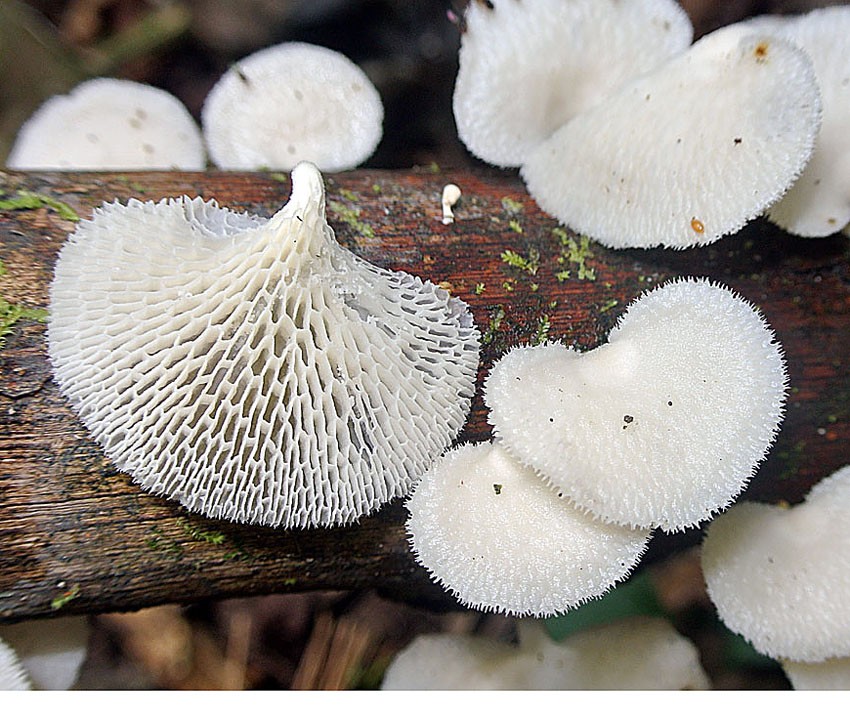Honeycomb fungus
Scientific name: Favolus
Honeycomb fungus
Scientific name: Favolus
 Photo By Dick Culbert , used under CC-BY-2.0 /Cropped and compressed from original
Photo By Dick Culbert , used under CC-BY-2.0 /Cropped and compressed from original Description
Honeycomb fungus is notable for its distinct honeycomb-like pores on the underside of its cap. These fungi are typically found on decaying wood and play a crucial role in breaking down dead trees and returning nutrients to the soil. Some species within this group have a uniquely pleasant, fruity smell. The intricate design of their pores not only makes them fascinating to look at but also maximizes their spore-dispersal efficiency.
Species of Honeycomb fungus
Scientific Classification
Phylum
Club fungi Class
Mushroom-forming fungi Order
Shelf fungi Family
Polyporaceae Genus
Honeycomb fungus